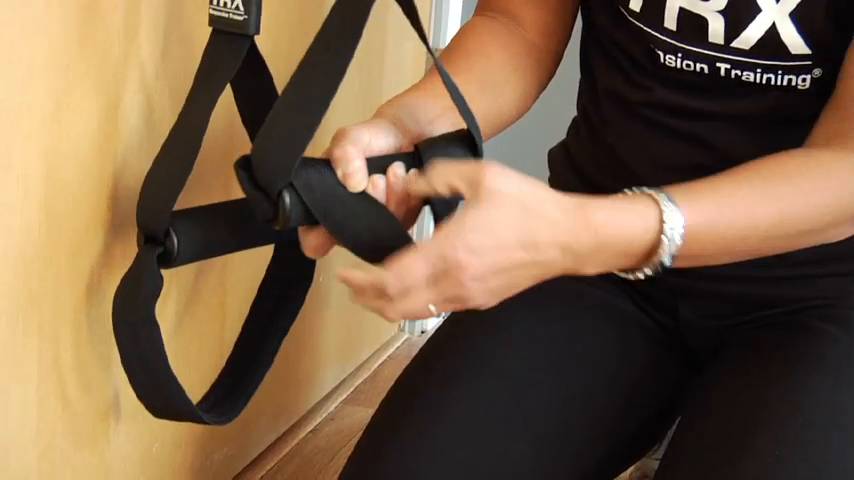The anterior cruciate ligament (ACL) is one of the most commonly injured ligaments of the knee, with approximately 200,000 ACL injuries reported annually. (Approximately 50% of patients with ACL injuries also have meniscal tears.) In this installment of Ask the Doctor, Dr. Perkash addresses a question posed by a member of the TRX Community on when it’s safe to start incorporating TRX Suspension Training after undergoing surgery to repair a torn ACL.
Question:
I am an avid TRX user and active athlete. I am a HS wrestling coach, Jiu Jitsu fighter and help train MMA athletes. I tore my ACL about five weeks ago and had surgery two weeks ago. Rehab is going well, and I have been working hard on it.
I am still training on the TRX Suspension Trainer, doing a lot of upper body work. I have been doing TRX Single Leg Squats and TRX Single Leg Hamstring Curls. I watched a video on the TRX website showing the TRX Hip Press, TRX Sprinter Start and TRX Single Leg Squat. How many weeks out of surgery can I start these exercises?
Also, do you recommend that I take any supplements to help recovery? I am a health nut and eat very well. I supplement a lot and just got some joint supplements. Is it a good idea to take a joint supplement for the recovery process? Thanks for your help.
Answer:
The treatment of a torn anterior cruciate ligament (ACL) has evolved over the past 15 years. There are a number of different treatments that have been offered ranging from conservative treatment for partial tears to reconstructive surgery with various types of materials used for the graft to replace the fully torn ACL. The graft material can be from the the patient's own patellar tendon, hamstring tendon, other tendons in the patient's body or cadaveric tissue can be used for the graft. Different physicians in various parts of the country use different materials, depending upon regional practice styles and training backgrounds. There are pros and cons to each of these types of grafts.
Furthermore, the surgery involved in an ACL repair has also evolved over time. Some portion of this surgery can be performed arthroscopically, meaning only small incisions are potentially needed for the surgery to be performed through a "scope" in which the surgeon can visualize the inside of the knee without actually making a large incision and looking directly at knee anatomy. Furthermore, many ACL tears are associated with injuries to other parts of the knee, such as the meniscus and the collateral ligaments. The bone plugs that hold the graft usually take at least eight to 12 weeks to become secure and stable in the bones of the knee.
Depending upon the nature of your surgery, the rehabilitation may vary somewhat in terms of milestones reached at a given point post-operatively, and the details of your rehabilitation should be discussed with your orthopedic surgeon and physical therapist.
The goal of rehabilitation after an ACL repair is to try to maintain range-of-motion early after the surgery. Advancement of exercises can depend upon the nature and invasiveness of the surgery, degree of injury and other medical factors, usually under the guidance of a physician and physical therapist. After an appropriate period of time, more advanced strength, flexibility, proprioceptive and agility training can be undertaken. To reduce the risk of future injuries and improve performance, this usually includes some core strengthening exercises as well.
Exercises that can be useful for rehabilitation after an ACL repair using the TRX include (with progressions). Want to find safe, effective exercises for your ACL recovery? Take our quick assessment quiz to get a personalized plan designed around your rehabilitation stage:
TAKE OUR TRAINING QUIZ
- TRX Half Kneeling Hip Flexor Stretch
- TRX Hip Hinge
- TRX Quad Stretch
- TRX Calf Stretch
- TRX Plank
- TRX Standing Hip Drop
- TRX Squat
- TRX Lunge
- TRX Single Leg Squat with Leg Assist
- TRX Hip Press
- TRX Hamstring Curl
- TRX Hamstring Runner
- TRX Sprinter Start
It is important to take guidance from your physician and physical therapist regarding rehabilitation of your specific situation.
With regard to supplements, there is no specific evidence that joint supplements such as glucosamine or chondroitin are advantageous after ACL repair. However, there is some literature to support glucosamine and chondroitin in reducing pain in knee osteoarthritis. It is unlikely that joint supplements will do any harm with chronic use, and since there may be some benefit in curbing symptoms of knee cartilage degeneration, there is very little downside in taking these chronically as we get into our 30s and 40s.
Good luck in the rehabilitation of your knee and in your general fitness!
For more on how TRX Suspension Training bodyweight exercise is a safe, scalable and effective solution for you or your patients, visit our Sports Medicine page.
NOTE: Any medical information in this blog is of a general nature and not a substitute for the advice of a medical professional. If you need medical advice, see a doctor.


